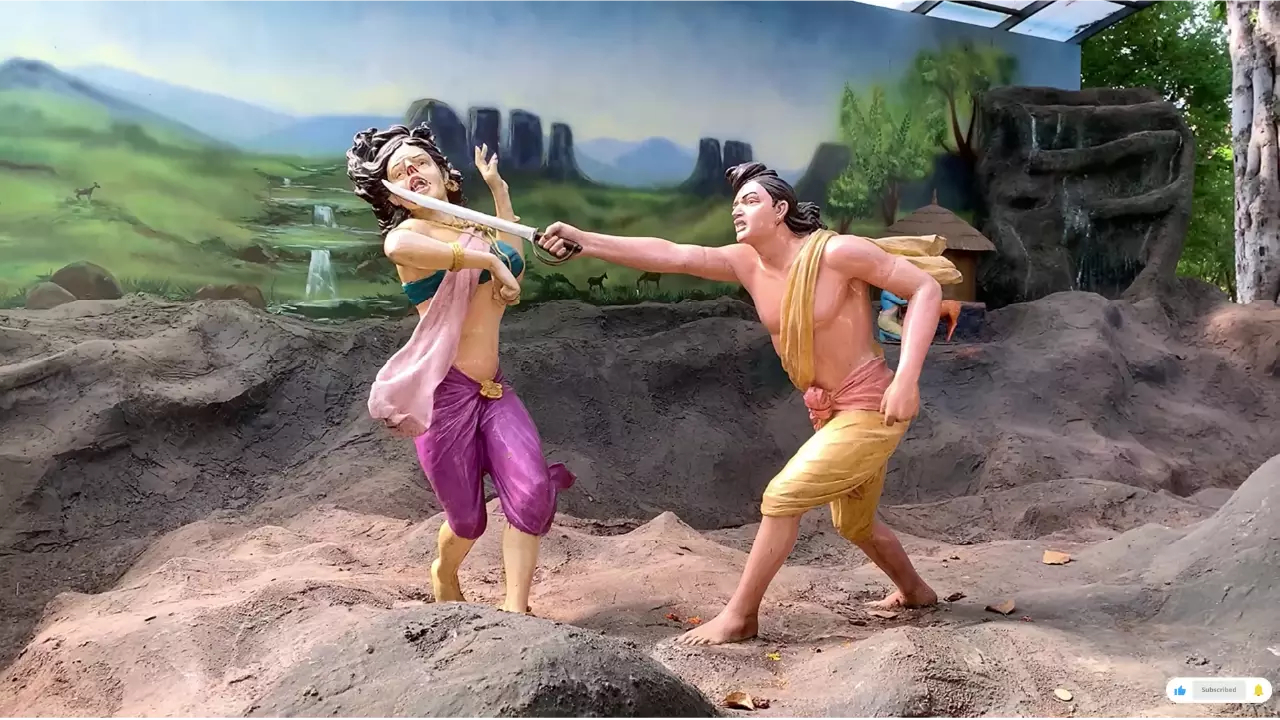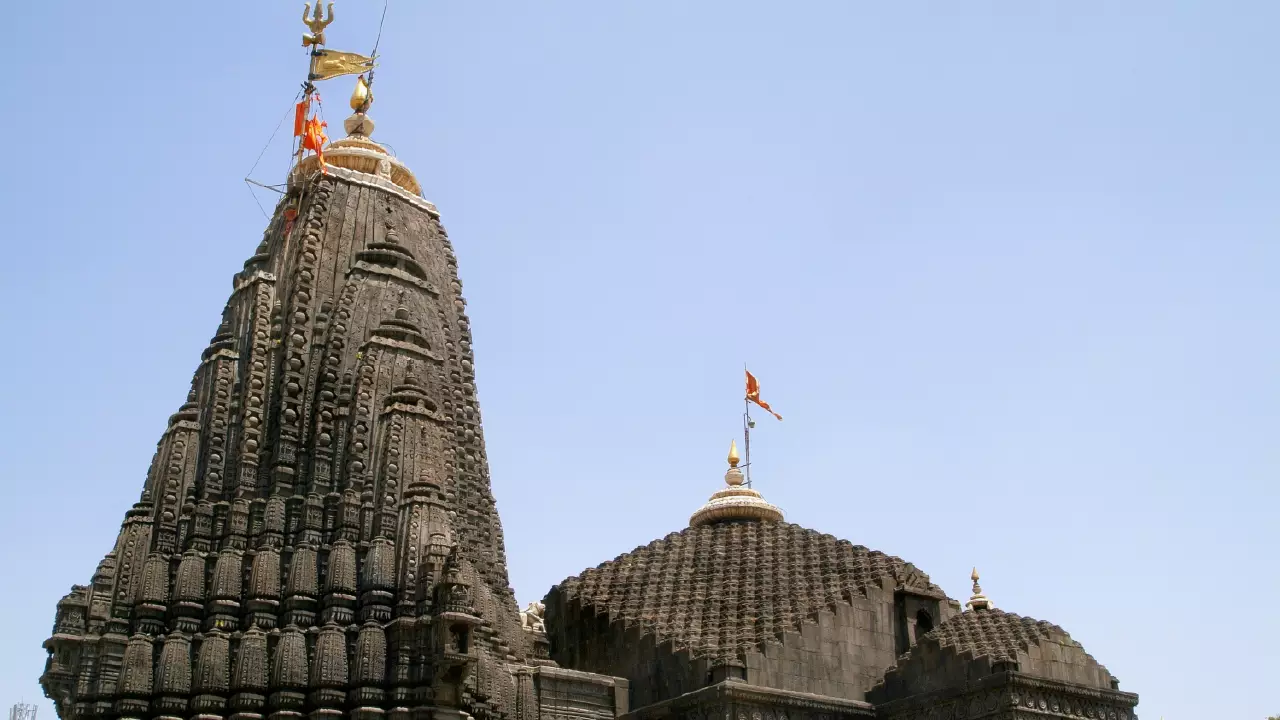The Story of Nashik Kumbh Mela
There is a unique essence to the gathering here, a story layered with divine grace, celestial precision, and a history carved by the saints themselves. To understand this great parva, you must listen not with your ears alone, but with your soul, for The Story of Nashik Kumbh Mela is not a single tale, but a confluence of many sacred streams.
The Cosmic Beginning: A Tale of Gods, Demons, and Immortality
The seed of all four Kumbh Melas was sown in a time beyond mortal memory, during the great cosmic event known as the Samudra Manthan, the Churning of the Ocean of Milk. this tale told a thousand times in the camps of the sadhus, each time as powerful as the first. The Devas (gods) and the Asuras (demons), in a rare moment of cooperation, churned the celestial ocean to obtain the Amrit, the nectar of immortality.
When the divine physician Dhanvantari finally emerged holding the precious Kumbh (pot) of nectar, the fragile truce was shattered. A fierce struggle for possession began. To safeguard the elixir, Jayanta, the son of Indra, took flight with the pot. For twelve divine days and nights—equivalent to twelve human years—a chase ensued across the heavens. During this celestial pursuit, it is said that four drops of the precious Amrit fell to the earth. The four sacred sites where these drops landed were Prayagraj, Haridwar, Ujjain, and our very own Nashik. This divine spillage consecrated this land forever, making it a focal point for spiritual energy and the primary reason for our gathering.

The Celestial Clock: Why the Lion Roars for the Kumbh
While the myth tells us why we gather here, it is the stars that tell us when. The timing is not a matter of human convenience; it is a divine appointment. The Nashik Kumbh is known as the Simhastha Kumbh, and this name holds the secret. Simha is the zodiac for Leo, the lion.
The Mela is held only when a specific, powerful astronomical alignment occurs:
-
Jupiter (Guru), the great preceptor of the gods, must enter the zodiac sign of Leo (Simha Rashi).
-
The Sun (Surya), the soul of our solar system, must also enter the sign of Leo.
When the planet of wisdom and the star of divine consciousness are both established in the powerful house of the lion, a celestial gateway opens. This alignment is believed to charge the waters of the Godavari with immense spiritual potency, making them resonate with the qualities of the original Amrit. This precise astrological configuration is the very heart of the Story of Nashik Kumbh Mela.
Two Sacred Streams: The Legends of the Godavari
The river itself is a central character in our story. The Godavari is not just a body of water; she is a living goddess, revered as the Ganga of the South. Her sanctity comes from two powerful legends that are unique to this region.
The Footprints of a God: Lord Rama at Ramkund
Long before the Amrit fell, this land was sanctified by the presence of Lord Rama. During his fourteen years of exile, he, along with Sita and Lakshmana, made his abode in the area we now call Panchavati, right here in Nashik. The focal point of the bathing rituals in Nashik city is a sacred ghat known as Ramkund. Tradition, passed down through generations, holds that this is the very spot where Lord Rama would perform his daily bathing rituals. This direct association with an avatar of Lord Vishnu infuses Nashik with a deep devotional spirit, attracting millions who wish to walk in the footsteps of their beloved deity.
The Penance of a Sage: Gautama and the Kushavart Tirtha
The second stream of the Godavari’s legend flows from the nearby town of Trimbakeshwar, at the foot of the Brahmagiri hills. As the Shivapurana tells us, the great sage Gautama once lived here. Through a unfortunate series of events, he was falsely accused of the grave sin of cow-slaughter. To atone for this, he undertook severe penance to please Lord Shiva.
Pleased with his devotion, Shiva commanded the celestial Ganga to flow down to earth at this very spot. The river that emerged is our Godavari, hence her name, the Gautami Ganga. Sage Gautama then created a sacred bathing tank, the Kushavart Tirtha, by striking the ground, creating a place where a single dip could wash away the gravest of sins. This powerful legend establishes Trimbakeshwar as the sacred source of the river and a place of immense purifying power.
A History Written by Saints and Swords
For centuries, the Kumbh Mela has been the primary gathering for the Akharas, the ancient monastic orders of Hindu ascetics. These orders, organized by the great Adi Shankaracharya, are the guardians of Sanatana Dharma. However, their different philosophies—the Shaiva Sannyasis who worship Shiva, and the Vaishnava Bairagis who worship Vishnu—have occasionally led to conflict.
old sadhus speaking of the great clash that occurred here in the 19th century. A fierce dispute between the Shaiva Naga Sadhus and the Vaishnava Bairagis over the right of precedence in bathing at Trimbakeshwar led to tragic bloodshed. It was a dark chapter, but one that led to a wise and lasting solution.
The Two Thrones of the Shahi Snan
To prevent such strife from ever happening again, the ruling authorities, in consultation with the leaders of the Akharas, established a formal separation for the main bathing ritual, the Shahi Snan (Royal Bath). This historic agreement is a crucial part of the Story of Nashik Kumbh Mela:
-
Trimbakeshwar: The Shaiva Akharas, including the formidable Naga Sadhus, were given the exclusive right to bathe at the Kushavart Tirtha, the sacred source of the river.
-
Nashik: The Vaishnava Akharas were allotted the holy Ramkund in Nashik city, the site sanctified by Lord Rama.
This division, born of conflict, has resulted in a beautiful and peaceful duality. The Nashik Kumbh is unique in that it is celebrated with equal fervor at two distinct but spiritually connected sites, each honoring a different path to the same ultimate reality.

The Living Story: The Kumbh Today
When you come to the Kumbh Mela today, you are stepping into this living, breathing story. The grand Peshwai processions of the Shahi Snan are a vibrant reenactment of this entire history. You see the fierce, ascetic power of the Naga Sadhus as they charge towards the Kushavart, their cries of “Har Har Mahadev!” echoing the energy of Shiva. In Nashik, you witness the ecstatic devotion of the Bairagis, their songs of “Jai Shri Ram!” filling the air with the loving grace of Vishnu.
The Story of Nashik Kumbh Mela is, therefore, not just a myth from the past. It is a confluence of the cosmic and the earthly. It is the story of a divine nectar that fell from the heavens, a celestial alignment that opens a spiritual gateway, a sacred river born from a sage’s penance, a land walked by a god, and a human history that found peace in sacred separation. To take a dip in the Godavari during the Simhastha is to immerse yourself in all of these stories at once, and to emerge, cleansed and renewed, as a part of its eternal flow.

